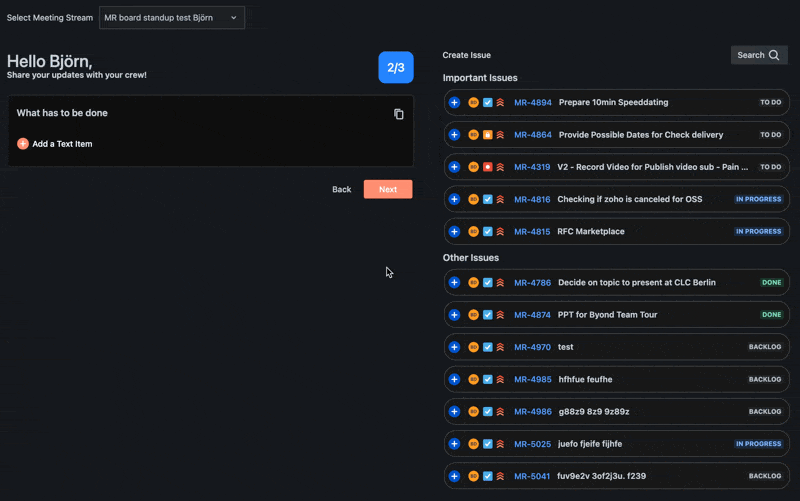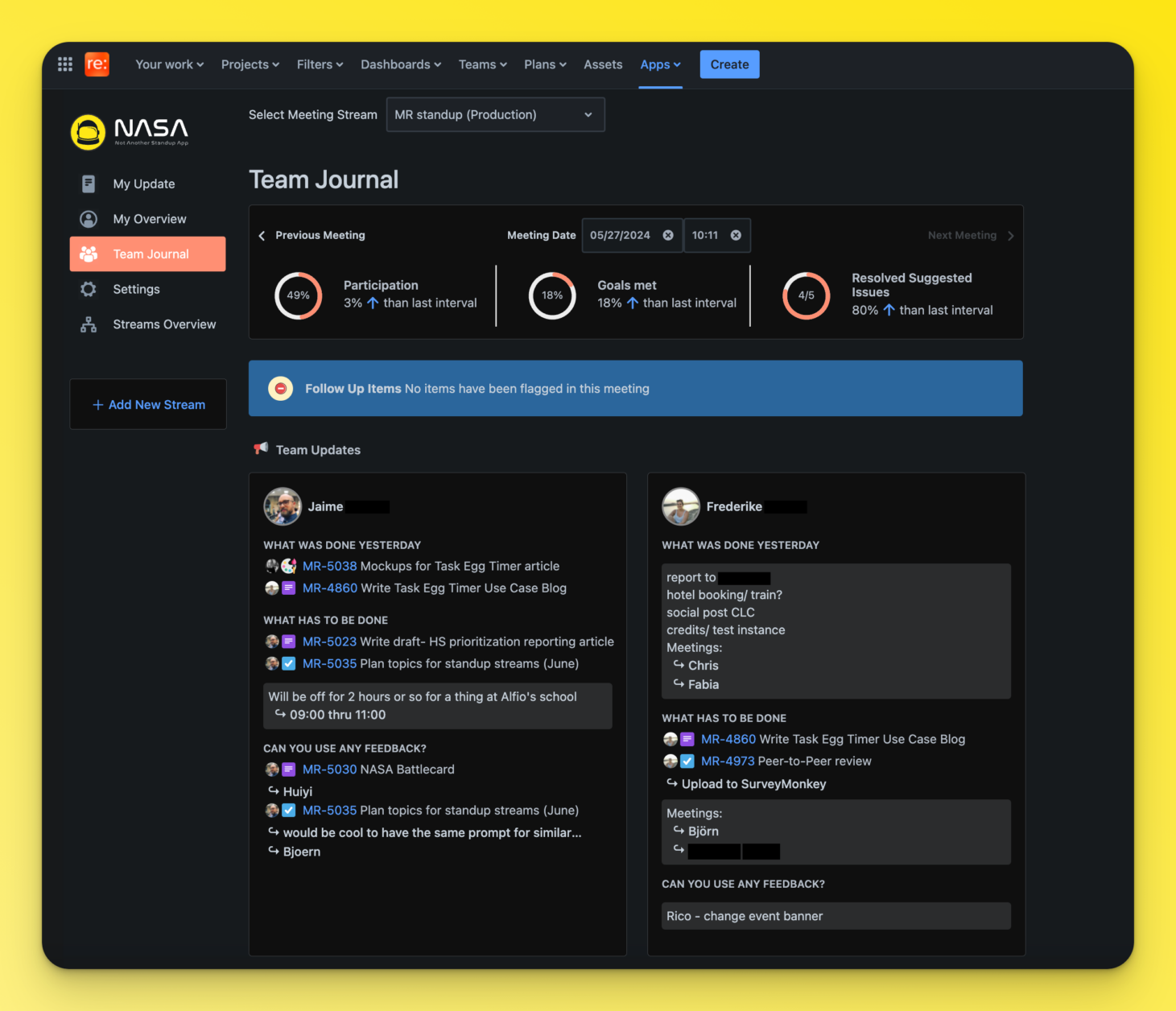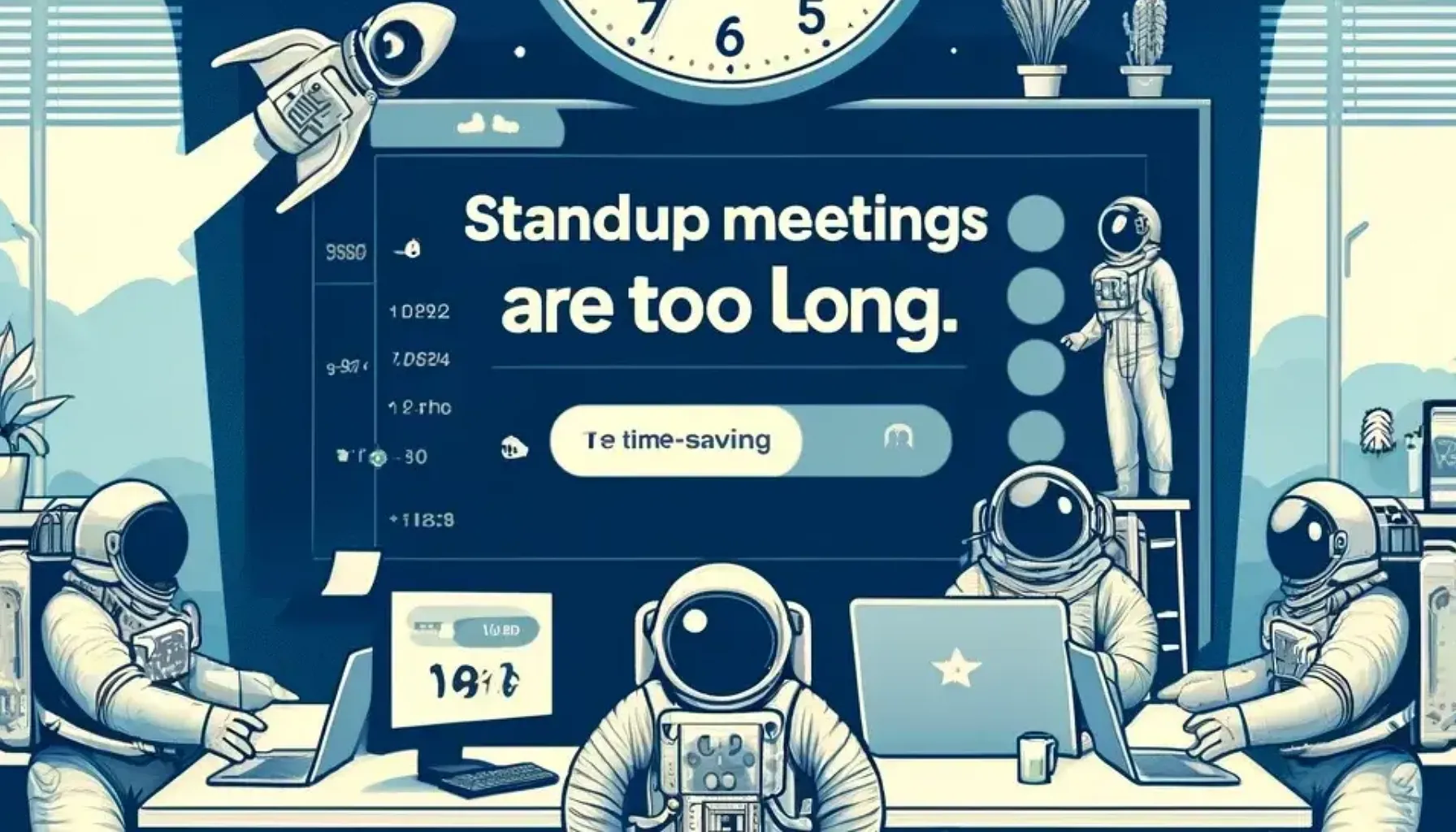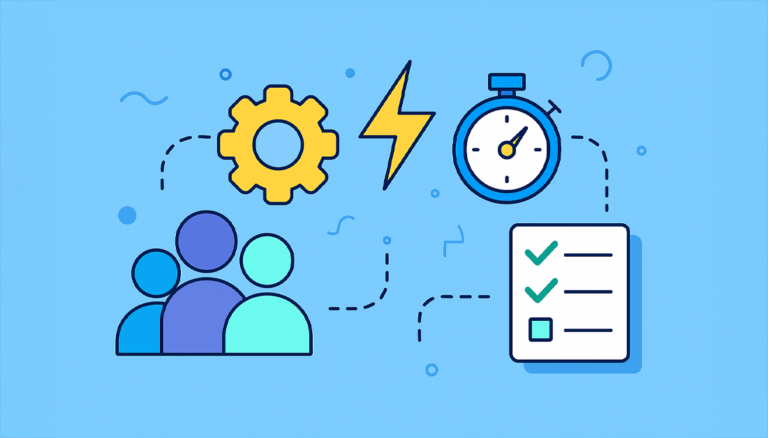Standup meetings are essential to agile methodologies and are designed to keep team members synchronized and informed. However, these meetings can sometimes become excessively long, defeating their purpose of being quick, efficient check-ins. Long standups consume valuable time, disrupt the workflow, and reduce overall productivity. In this blog post, we will explore why standup meetings often drag on, the consequences of extended meetings, and how NASA – Not Another Standup App for Jira can help streamline your standups, ensuring they are short, focused, and effective.
The Problem with Lengthy Standup Meetings: A Look at the Daily Stand Up Format
Several factors contribute to the elongation of standup meetings:
- Lack of Preparation: When team member come unprepared, they tend to ramble as they try to recall their progress and future tasks.
- Unstructured Format: Without a clear structure, discussions can easily veer off-track, leading to extended meeting times. A daily scrum is a structured, short meeting where team members discuss their current progress, short-term goals, and any obstacles they face in their work. Daily scrum meetings are crucial for maintaining alignment and accountability within agile teams.
- Detailed Discussions: Standups are meant for brief updates, but they often turn into problem-solving sessions or detailed discussions that should be handled separately.
- Large Teams: With more participants, the time for everyone to share their updates increases, especially if each person takes longer than necessary.
- Blockers and Dependencies: Extended conversations about blockers and dependencies can consume a significant portion of the meeting time.
What is a Standup Meeting?
A standup meeting is a brief, daily gathering of team members to discuss progress, goals, and obstacles. It’s a fundamental component of agile development, designed to keep the entire team informed, aligned, and focused on achieving the Sprint Goal. Standup meetings are typically short, lasting around 15 minutes, and are held at the same time and location daily. This routine helps ensure that everyone is on the same page and can quickly address any issues that may arise.
Benefits of Standup Meetings
Standup meetings offer numerous benefits to teams, including:
- Improved Communication and Collaboration: Regular updates help team member stay informed about each other’s work, fostering better collaboration.
- Enhanced Transparency: Standups provide visibility into individual and team progress, making it easier to track project status.
- Increased Accountability: Knowing they will share their progress daily motivates team members to stay on track and meet their commitments.
- Early Identification of Obstacles: Standups allow for the early detection of blockers, enabling the team to address issues before they escalate.
- Better Alignment with Goals: Daily scrum meetings help ensure that everyone is working towards the same objectives, aligning with company goals.
- Improved Team Cohesion: Regular interaction helps build a sense of camaraderie and teamwork among team members.
Common Pitfalls of Standup Meetings
While standup meetings can be highly beneficial, they can also be prone to common pitfalls, such as:
- Lack of Clear Purpose or Agenda: Meetings can become unfocused and unproductive without a defined agenda.
- Insufficient Time for Discussion: Rushing through updates without allowing time for questions can leave essential issues unaddressed.
- Dominance by a Single Team Member: When one person monopolizes the conversation, it can stifle input from others and reduce overall engagement.
- Failure to Address Critical Blockers: Ignoring or glossing over blockers can lead to unresolved issues that hinder progress.
- Inadequate Follow-Up: Without proper follow-up, action items may fall through the cracks, reducing the effectiveness of the meeting.
- Inconsistent Attendance: Irregular participation can disrupt the flow of information and hinder team cohesion.
The Consequences of Long Daily Standup Meetings
When daily standup meetings extend beyond their intended duration, it negatively impacts the team in several ways. Effective stand up meetings enhance team coordination and productivity by allowing members to share their progress on specific tasks.
- Reduced Productivity: Longer meetings cut into valuable working time, reducing the team’s overall productivity.
- Decreased Engagement: Team members may become disengaged if they feel their time is being wasted, leading to less effective communication and collaboration.
- Meeting Fatigue: Frequent, lengthy meetings contribute to meeting fatigue, making team members less enthusiastic about attending future standups.
- Disrupted Workflow: Extended discussions can disrupt work flow, causing project progress delays.
How to Run an Effective Standup Meeting
To run an effective standup meeting, follow these best practices:
- Set a Clear Purpose and Agenda: Define the meeting’s objectives and ensure all team members understand what to expect.
- Keep It Short and Focused: Limit the meeting to 15 minutes or less, and avoid unnecessary discussions or tangents.
- Encourage Active Participation: Ensure all team members have an opportunity to share their updates, goals, and obstacles.
- Address Critical Blockers: Prioritize discussion of critical blockers or obstacles, and assign action items as needed.
- Follow Up and Follow Through: Ensure that action items are completed, and provide feedback and recognition to team members.
Adhering to these guidelines ensures that your standup meetings are efficient, productive, and beneficial for the entire team.
How NASA – Not Another Standup App Streamlines Standup Meetings for Remote Teams
NASA – Not Another Standup App for Jira is designed to address the issues of lengthy virtual stand up meetings by providing tools and features that ensure meetings are concise, structured, and productive. NASA helps ensure that everyone, including remote team members, is engaged and informed. Remote teams face challenges such as time zone differences and maintaining engagement during video calls. Here’s how NASA can help:

Prepare Updates:
- Reduce Meeting Time: NASA allows team members to provide their updates asynchronously before the stand up meeting. This approach significantly reduces the time spent during the actual meeting, as everyone’s updates are already available for review.
- Encourage Preparation: By prompting team members to prepare their updates in advance, NASA ensures that everyone comes to the meeting ready, minimizing rambling and off-topic discussions.
Structured Format:
- Consistent Framework: NASA provides a structured update format, typically following the “Yesterday, Today, Blockers” model. This consistency helps keep the meeting focused and on track. But you can also change it to your structure.
Integration with Jira:
- Centralized Information: NASA integrates seamlessly with Jira, allowing updates to be directly created out of Jira tasks. This integration ensures that all relevant information is centralized and easily accessible, reducing the need for lengthy explanations.
- Real-Time Sync: The app syncs updates in real-time, ensuring that the latest information is always available, which helps in keeping the meetings brief and to the point.
Focus on Blockers:
- Highlighting Blockers: NASA prompts team members to clearly identify blockers in their updates. This focus ensures that the stand up meeting can prioritize addressing these issues quickly, without getting bogged down in less critical details.
- Follow-Up Actions: By documenting blockers and linking them to Jira, NASA ensures that follow-up actions are tracked and addressed outside of the standup, preventing prolonged discussions during the meeting.
Engagement and Collaboration:
- Interactive Interface: NASA’s user-friendly interface encourages team members to engage with each other’s updates, fostering better communication and collaboration outside of the stand up meeting.
- Transparency: The app makes all updates visible to the team, ensuring transparency and encouraging accountability.
Team Journal and Improvement:
- Team Journal documents automatically every Standup Meeting. The Team Journal allows team members to rewind the day, the week or up to the last 30 meetings in one screen.
- Continuous Improvement: Regular feedback and insights from NASA help teams improve their standup process, ensuring meetings remain efficient and effective.

Implementing NASA in Your Standup Routine for Team Members
Implementing NASA in your standup routine is straightforward and can lead to immediate improvements:
- Setup and Integration:
- Install NASA: Start by installing NASA – Not Another Standup App from the Atlassian Marketplace and integrating it with your Jira Cloud instance.
- Configuration: Configure the app to suit your team’s workflow and preferences, ensuring that updates are linked to the relevant Jira tasks. More information.
- Onboard your Team:
- Setup your Standup Meeting Stream: Create your Standup Meeting online based on your Jira Board, define the structure or use our stand up meeting agenda template, invite your team and have your first daily. The scrum master plays a crucial role in facilitating these standup meetings and guiding the team.
- Encourage Engagement: Encourage team members to actively engage with the app, creating updates and coming to the standup meeting ready to discuss key points. The obstacles faced by one team member can impact the entire group, making communication and problem-solving essential.
- Monitor and Adjust:
- Review the Behavior Changes: Use NASA’s features to monitor the effectiveness of your standup meetings.
- Make Adjustments: Based on the insights provided, continuously refine the process to ensure maximum efficiency.
Real-World Impact: NASA in Action for Agile Teams
Teams that have adopted NASA as their standup meeting tool have reported significant improvements in meeting efficiency and productivity for the whole team. For example, a software development team noticed that their standup meetings were reduced by 50% in duration, as participants came prepared with clear, concise updates. Moreover, the focus on blockers helped the team address critical issues more promptly, improving their sprint velocity and overall project progress.
Conclusion
Long standup meetings can be a significant pain point for agile teams, but they don’t have to be. By leveraging NASA – Not Another Standup App for Jira, you can streamline your standups, making them shorter, more structured, and more productive. NASA’s features, including asynchronous updates, a structured format, Jira integration and real-time sync, help address the root causes of lengthy meetings. With NASA, your team can stay focused.




